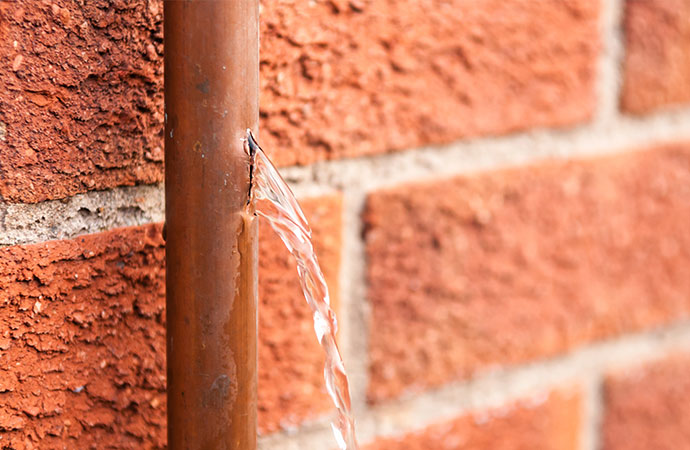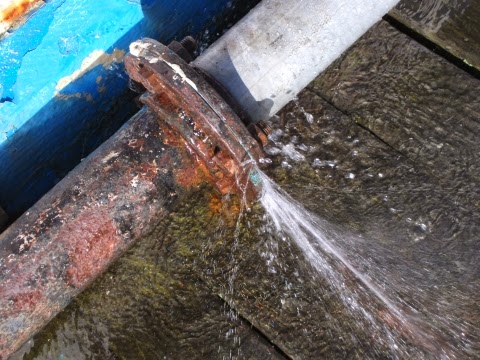Quick-Response Plumbing: Tips for Identifying as well as Fixing Ruptured Pipes
Quick-Response Plumbing: Tips for Identifying as well as Fixing Ruptured Pipes
Blog Article
We have encountered the article pertaining to How to install a dishwasher safely down the page on the web and felt it made sense to relate it with you on my blog.

A ruptured pipeline is a significant emergency; you can just stand as you enjoy water you pay dearly to rejoin with the earth. In worse instances, you discover a swimming pool on your kitchen area flooring, which is a terrific journey hazard, specifically if you have kids around. If the pipe that burst remained in your walls, bad news: you might need to repaint that whole section.
How can a catastrophe like a burst pipeline be stopped and taken care of? Well, by paying attention to your professional emergency plumbers and also complying with these rules.
Exactly how do I know when my pipelines have burst?
Changing water stress
Pipes do not simply burst in a day. You may have seen that your kitchen tap or shower does not run instantly when you transform the faucet. It may stop for a few secs and then blast you with more pressure than usual.
In other circumstances, the water may seem regular at first, after that decrease in stress after a few secs.
Wet wall surfaces and water discolorations
Before a pipeline bursts, it will certainly leak, a lot of times. If this relentless leaking goes undetected, the leak might finish into a vast gouge in your pipeline. One easy method to prevent this emergency is to watch out for damp wall surfaces ad water spots. These water discolorations will certainly lead you right to the leak.
Puddles under pipes and also sinks
When a pipeline bursts, the outflow develops a pool. It may appear that the pool is growing in dimension, and also no matter the number of times you mop the puddle, in a couple of mins, there's another one waiting to be cleaned up. Often, you may not have the ability to map the pool to any visible pipes. This is an indication to call an expert plumber.
Untraceable trickling sounds
Pipeline bursts can happen in the most unpleasant places, like within concrete, inside walls, or under sinks. When your home goes silent, you might have the ability to listen to an irritatingly consistent dripping noise. Also after you have actually examined your shower head and also kitchen area tap, the dripping might proceed.
Precious reader, the trickling might be originating from a pipe inside your wall surfaces. There isn't much you can do concerning that, except inform a professional plumber.
Turn off the Water
When water freezes, it expands in volume by concerning 9 percent. And also it broadens with incredible force: The stress inside pipelines might go from 40 pounds per square inch to 40,000 psi! No pipeline can hold that much stress, so it bursts. The break might take place where the ice kinds, but more often, it occurs where water pressure discovers a vulnerable point in the pipe. That may be inches and even feet from the frozen area. Discover the water shutoff valve as well as switch off the water to prevent more damage. You may likewise require to shut down the electricity as well, depending on where the leakages occurs and exactly how large it is.
Infected water
Many people presume a ruptured pipeline is a one-way outlet. Quite the contrary. As water drains of the hole or tear in your plumbing system, pollutants locate their way in.
Your water might be contaminated from the resource, so if you can, check if your water storage tank has any issues. Nonetheless, if your alcohol consumption water is supplied and also detoxified by the city government, you need to call your plumber instantly if you see or smell anything amusing in your water.
What do I do when I spot a ruptured pipeline?
Your water meter will remain to run also while your water wastes. To minimize your losses, discover the major controls and also turn the supply off. The water pipe are an above-ground structure beside your residential or commercial property.
How to Fix & Detect a Leaking Pipe
How Do I Know if a Pipe is Leaking?
Leak detection tests can help you determine if your pipe has a leak. Even if you don’t see an apparent leak, you should still conduct leak detection tests regularly to save water and money—and prevent major damage to your home.
Water meter. It can be helpful to figure out what your usual water meter usage numbers are and then monitor them regularly. To monitor your meter, first, turn off all water faucets in your home. Check the meter and write down the numbers. In a few hours, check the meter again. If the numbers have changed, you have a leak. Water gauge. Use a water gauge to test your water pressure. Your showerhead should produce a certain amount of water pressure based on its model and design. If the pressure is lower than it is supposed to be for that specific showerhead, your home likely has a leak. Puddles. Look inside your bathroom, laundry, and kitchen sink cabinets. Puddles around the cabinets or around toilets, tubs, showers, and washing machines indicate the presence of a leaking pipe. You may also notice loose tiles, peeling or flaking paint, or mold caused by water accumulation. Napkin test. Even if you don’t see any puddles, you may still have a leak. You can test for water leaks in the bathroom, laundry, and kitchen by wiping below-sink connections with a napkin, paper towel, or piece of toilet paper. If it becomes damp, you probably have a leaking pipe under the sink. Discolored walls. Walls that are discolored—usually with brown or yellow stains—or bulging might mean that they have been impacted by water damage caused by a leaking pipe. Smell. A leaky pipe will create sitting water, and over time, that water may develop a musty smell. If your home smells musty, but you can’t locate the source, it may be due to a leak. Steps for Fixing a Leaking Pipe
A leaky drain can be remedied by tightening the pipe base, replacing the drain seal, caulking the rim, and tightening the pipe nut. Similarly, a leaking toilet pipe can be treated by tightening the packing nut. You may also need to replace the valve. A leaky faucet may just need tightening or replacement of the washers. If that doesn’t work, consider replacing your faucet. If your pipe has a hole in it, you may want to use a pipe leak sealer or pipe leak tape. This quick fix for water pipe leaks can also temporarily fix a copper pipe leak. https://www.ahs.com/home-matters/quick-tips/how-to-tell-if-pipes-are-leaking/

As an enthusiastic reader about How to install a dishwasher safely, I think sharing that blog post was really helpful. Sharing is good. You won't know, you will be helping someone out. I thank you for reading our article about How to Install and Connect a New Dishwasher.
Maintenance Sign-Up
Report this page